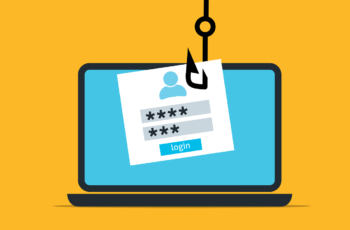In one of the past Talkin Tech by Integer Consulting, Bruno Barroso, Senior Software Engineer at Integer, shared with us a little bit about his experience and trajectory in product creation. In this article, you will learn a little more about this Talkin and get to know Bruno a little better.
Hi Bruno, tell us a bit about yourself and where your entrepreneurial vein comes from.
I’m Bruno Barroso, Senior Software Engineer, brazilian, born in Fortaleza and passionate for new experiences, cuisine and new cultures. With artisan and entrepreneur parents, I think I always had the incentive, at home, for business, creativity and creation of real products. In my free time, I am always thinking about how I can create something that will help people, in other words, a product that is a solution to a real problem. It was with this spirit that I developed my entrepreneurial side and with each new experience I can achieve better results and reach more people.
Do you think anyone can start a business?
In 28 years, I’ve had many and varied ideas! Ideas with friends, ideas with family, ideas with people I meet, with work colleagues… but what counts is the execution, I mean, getting down to business and getting your project off the drawing board, from the field of being just an idea. You’re probably thinking “I also have several ideas, but in the end nothing happens…” so I share my vision with you:
If you start today to look for solutions within the problem environments where you live, such as a process improvement in your company, an improvement in an Excel sheet, etc. you will realize that the key to entrepreneurship is to know how to use creativity and innovation to solve a problem of everyday life. For example, that’s how the chatbot technology emerged, automating the service of people through a chat with a machine, removing something repetitive and leaving the personalized service to the human. Another example is the supermarket shopping process: have you ever stopped to think that everyone puts several items in the cart, takes them out of the cart, goes to the checkout, makes the payment and then puts them back in the cart? That’s how Amazon Go came about. A service that allows you to shop in a simple way, without bureaucracy and without queues: you go in, pick up the products you want and, thanks to the app, you just have to leave the place and the app will charge you for what you’ve taken off the shelf. Curious? Here’s the video: https://www.youtube.com/watch?v=NrmMk1Myrxc
That said, can anyone set up a business? Of course they can. Maybe everything has already been created (or not), but everything can be improved. Where there are processes, there is a business opportunity.
What are the characteristics that an entrepreneur needs?
I’m not a product guru, but as a software developer for 12 years and a creator of “stuff” for 28 years – that’s right, since I was a kid I haven’t stopped thinking about how to change the world and make it better for everyone – what I’ve realised is that the best school for entrepreneurship is error. There is no magic formula for success, but the quickest and cheapest way is to learn from the mistakes of others. So, make no mistake, the idea you are thinking about now has already been thought of by thousands of people and many have even tried to bring it to life, but your project will only be different if you move on to the second step: execution.
There are several sites dedicated to the entrepreneurial ecosystem in Portugal and worldwide, which can help you. Here are some examples: Agência Nacional de Inovação, Made of Lisboa, Rede Nacional de Incubadoras, Web Summit, CTO Portugal community and 351 Community, Build Up Labs incubator, Startup Lisboa and YCombinator Startup School.
I would say that’s what it is, being resilient, having the willingness to learn from mistakes and leaning on networking from communities of entrepreneurs.
For those who want to take the idea off paper, what tips can you share?
I have elaborated some steps that I consider important to reach the next level of entrepreneurship:
1. Problem – Observe the day-to-day problems, whether at work, at home or on the street.
2. Idea – Now that you have identified the problem, try to understand if this problem is common to other people and if they would pay to have this problem solved. The idea is the key that will help you identify a possible solution.
3. Plan– With an idea in hand, you need to structure the business, do some market research, understand how many people outside your cycle have also dealt with this problem. At this moment, you should create a Business Model Canvas, and with this model you will have answers to some of the questions about your business idea.
4. Execution – Once you have a business plan, the big moment has come: working to launch the product. Sometimes, having something done, is better than having something perfect (or not launched). So focus on creating a minimal version of your product or service and try to validate it with real people and customers. This will help you understand the best way forward and even how much you can charge for the product. The name given to this “minimum” version of the product is MVP (Minimum Viable Product) and there are several strategies for creating an MVP.
The importance of MVP and how to create it
The image below, illustrates well what an MVP is. Creating a minimum viable product is not about having incomplete versions of a product, the MVP has to be able to solve the problem from day one.
Tips to create an MVP:
1. Benchmarking: Do benchmarking to find shortcuts. Learning from others’ mistakes is always cheaper and saves a lot of development time.
2. Hypothesis: Focus on the core value proposition and creating the hypothesis. This is what will really dictate the level of demand for your solution.
3. Market: Apply your MVP to a realistic context. Use your friends and family as market representations but be aware that it can drastically skew the data and motivate wrong decisions.
4. Metrics: It is always interesting to create metrics for your business. They will provide the data you need to replicate successes and avoid mistakes.
5. Results: Before testing any MVP, you should know what a good or bad result is, and how to measure it. If it’s not possible, rethink how to validate traction with the market.
My experience
It was by putting all of this into practice, getting the idea off the paper and doing a lot of networking, that me and Thiago Dieb, my partner at Fretx, managed to create Fretx. A platform that helps people with residential removals transport problems, and we have already reached over 6,000 clients, over 1,000 carriers in our network and sent almost 20,000 business proposals in a year. Positive results, a reflection of a lot of dedication, working with a purpose, analysing each step, making mistakes quickly and correcting them quickly too.
If through my experience and my testimony, I manage to influence at least one person, my mission has been accomplished.




